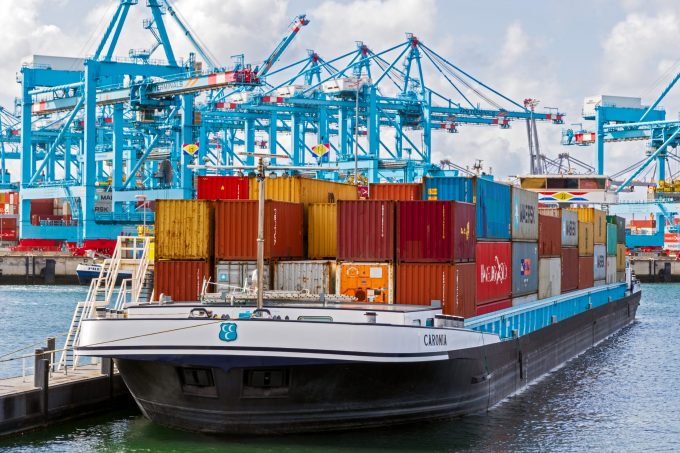DP World eyes 'niche' M&A in North America to develop end-to-end solutions
DP World is looking to partner with “niche players” in the US, Canada and Mexico to ...

Low water levels have led to “chaos” on Germany’s River Rhine, with barges moving at just 20-30% of capacity due to draught limitations and things set to deteriorate even further.
Yesterday, Contargo confirmed the water level on the Kaub Gauge had fallen to 47cm – the lowest for four years – with forecasts suggesting it will keep falling next week and that the Rhine will close to barge traffic.
Metro Shipping MD Grant Liddell told The Loadstar: “This is critical, as a huge amount moves between Rotterdam, Antwerp, Germany and Poland on the Rhine.
“For the past month we’ve been redirecting shipments we’d normally send by barge, to rail, but rail capacity is now full as it’s not geared for taking 100% of the movements that don’t travel by truck. So if the Rhine shuts, trucking is the only option.”
And switching from barge to rail brings its a premium, with sources suggesting it costs around €50 more to move goods – but compared with trucking (€300), it made sense, he said.
With water levels below 50cm, Contargo has brought in low water surcharge (LWS) of €589 per 20ft box and €775 per 40ft, figures described by a source as “nuts” – but the operator is not alone in implementing an LWS, the source said they were paying €200 and €260, respectively.
The industry insider told The Loadstar: “Truck capacity is getting hard to come by, but not impossible, but of course it comes at a price.
“Barges operating at just 20-30% of capacity has generated a backlog and, for the next week, users should be expecting a minimum 25% premium to shift from the Rhine to trucks.”
For major commodities, the closing of the Rhine will be a “disaster”, and is likely to result in shippers refusing to use inland services, as happened when waters hit 25cm in 2018.
Figures from 2017 indicate that 2.37 million teu moved between the Rhine, Antwerp and Rotterdam; falling to 2.13m for 2018. One barge owner said: “The previous low water situation pushed some 237,000 teu from barges to rail and road and they have not returned.
“And, with the crisis in Ukraine, Germany is shoring-up barges to move badly needed coal, which has removed around 40% of capacity from the market – and now barges that are moving are impeded by draught limits.”
The low water levels are just the latest in a long line of issues to have plagued northern Europe’s inland waterway users, after delays of several days and sometimes weeks have become the norm.
VP of inland and logistics Europe for DP World Rob Harrison said the “extreme” low water would impact congestion by limiting cargo-loading capacity that, combined with minimum call sizes imposed by deepsea terminals, made swift delivery extra challenging.
“When there are threats such as this, to compensate for any lost loading capacity DP World Inland uses a combination of alternatives,” Mr Harrison told The Loadstar. “These include rail and trucks to ensure the flow of goods can continue.
“In this instance, we have chartered in 15 trucks to use as a truck bridge, and we have established Krefeld as an interim hub point lower down the Rhine, linking there via rail and truck.”
Many in the industry have pointed to human-generated climate change as to the reason for the increasing frequency of low water levels. However, Oxford University’s Dr Kevin Grecksch, whose research focuses on governance in relation to water and climate change adaptation, was cautious over where to lay blame.
“Climate models show a tendency for hotter and drier summers in central/northern Europe, meaning droughts and water scarcity,” he told The Loadstar. “For a major river such as the Rhine, the consequence can be dire. Cargo needs to go elsewhere. It should go on the railways, but is likely to go on lorries, causing more emissions and traffic.”
Comment on this article